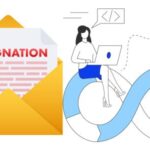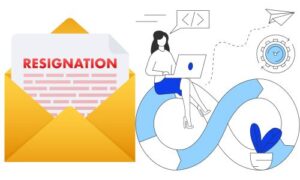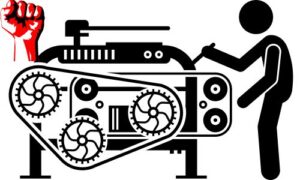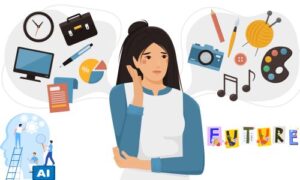QUESTION:
In Sustainable Design (SET111) unit, Design portfolio assessment consists of 9 individual tasks. You will need to design an artefact or changing the design (modification) of an existing artefact to have less negative impact on the environment by completing the tasks described below. In this assessment guide the requirements to complete each task are provided with a few examples. Throughout the trimester you will have the opportunity for feedback for the tasks before final submission.
Portfolio Item 1 – Problem statement (Description of the design challenge):
You need to describe your design challenge, and clearly provide design objectives. You can add up to 3 photos (your own taken photos or screenshots) with appropriate annotations to better communicate your design idea. The word limit for this task is 250.
You may propose a novel design or alternatively revising the design of an existing artefact. In either case, you should provide prioritised design objectives to work towards.
Portfolio Item 2 – Mind Map
Helps expand thoughts during the design process. Each node on the mind map is one of the main design objectives e.g. Design for Disassembly, Design for Longevity, Design for Reusability, Design for Dematerialization, Design for Manufacturing, Design for assembly, aesthetic and further details or branches around each node provide information about how to address that design objective. Note that the developed mind map should clearly show the design considerations/directions for the whole assembly or main components of the artefact with references to various features/parts of the artefact.

Figure 1 Mind map showing the design objectives for a new design of sustainable hoverboard
Portfolio Item 3 – Concept Development and visualization of ideas
The development process starts with sketching and works through rough layouts and comprehensives to the final solution. Sketching is an excellent way to quickly explore concepts. The intention here is to have as many feasible ideas and design alternatives as possible.
Your portfolio should include:
- 2 – 4 Concept sketches of different ideas. The design features unique to each design concept should be highlighted using appropriate annotations on each concept sketch.
- Sketches to be scanned for the submission.

Figure 2 showing concept 1with increased wall thickness for side fenders
Note: Variations in design ideas should be major i.e. changing the design of one (or all) of the main components for each design concept.
Portfolio Item 4 – Evaluation of Design alternatives
The Concept Analysis task provides an opportunity to practice analysis used to make conceptual design decisions. With 2-4 feasible designs in hand, you need to evaluate the design concepts and choosing the “best” or preferred design. The word limit for this task is 500.
The major aspects of this task are:
- Systematically compare alternative concepts for fulfilling the design objectives as defined in task 1.
- Select the most promising concept for the artefact supported by evaluation of the alternative concepts.
Note: The weights of design criteria should be assumed based on the importance of each design objectives as you have described them in Task 1.
Portfolio Item 5 – Information Sketch
Information sketch should provide sufficient technical information about your chosen concept, and effectively communicates features, functions and materials through annotations and supporting graphics.
You should provide hand sketches of the whole assembly (artefact) including:
- 4 sketches of the artefact showing the whole assembly from isometric, top, side, and front views
- Each drawing should have annotations showing the overall dimensions, and highlighting features, and materials.

Figure 3 Top view of the selected concept
Portfolio Item 6 – 3D generated Models
With advances in design and 3D CAD software, prototypes can now easily come alive on a computer screen. You need to develop a 3D model based on your information sketch. Minor changes from the information sketch (Task 5) are allowed. The artefact should have been modelled as an assembly of minimum five components.
Your portfolio should include:
- 3 orthogonal (Front, Top, side views) and 1 isometric view of the whole assembly
- 1 isometric view of each individual component.
- The CAD file used to model your product must be uploaded on the same assessment folder. This task will be not graded if the CAD file was not submitted.
- To be assessed for above pass grade for this task, design features created by advanced tools e.g. 3D sketching, loft with curved paths, surface modifications, equation driven curves MUST be annotated on the views describing the tools that have been used.
Tip: On Fusion 360 choose export function to save your CAD file as *.f3d on your local hard drive.

Portfolio Item 7 – 2D technical drawings
Technical Drawings are the documentation (notes and specifications) to communicate your design. They should provide sufficient information e.g. dimensions, and materials for the parts to be manufactured.
Your portfolio should include:
- One exploded view of the whole assembly with bill of materials.
- One 2D drawing per component with Top, Side, Front, and isometric views with a complete set of dimensions and proper use of cross-section or detail views.
- CAD drawings to be exported as PDF files and merged with the rest of submission. The drawings may be inserted as A3 size or reduced to A4 size.
Tip: To reduce A3 to A4 size, once the drawing is exported as pdf file, open the file using adobe reader, choose file>print, select A4 size and “fit to printable area” then choose “print to file”.
Note: Deakin title block should be used and properly filled for each drawing.

Figure 6 Isometric view of the whole assembly with bill of materials

Figure 7 Orthogonal views of “Housing” component
Portfolio Item 8 – 3D Rendered images
Contains a high level of visual realism to fully define the product appearance. Concepts like superposition may be explored to better demonstrate the context of your design.
Your portfolio should include:
- A minimum of 3 views for the whole assembly of your design with appropriate colour and texture to highlight the features / aspects / context of your design

Portfolio Item 9 – Infographic
The main purpose of the infographic is a visual representation of information or data in an easy to digest format for the non-designer or lay person. It generates context and situational awareness of the product. “A good infographic is worth a thousand words”
Your portfolio should include:
- Rough (1st draft) version of your infographic – to be scanned for the submission.
- Final version of your infographic.

Figure 10 Final version of “JET BLO” infographic
SOLUTION:
Portfolio Item 1 – Problem statement (Description of the design challenge):
Ingestion, asphyxia, and tangling of thousands of marine organisms are by far the greatest evident effects of plastic trash. Seabirds, dolphins, fish, and turtles confuse plastic garbage for food, and the majority of them starve to death as their bellies fill with plastic. Plastic eyeglasses may be lost in the water, posing a serious threat to marine life. Plastic here on ocean’s top may trap sunlight, making it hotter on the top and lowering the quantity of light and heat reaching the planet’s depths. The experts warn that if plastic waste covers the ocean’s top, it will have an impact on marine organisms and the warming climate chain. As a result, we must limit our usage of plastic eyeglasses.
Portfolio Item 2 – Mind Map

Figure 1 Mind map showing the design objectives for a new design of sustainable hoverboard
Portfolio Item 3 – Concept Development and visualization of ideas
When produced and collected, tree pulp as well as cotton linters get the potential to be extremely detrimental to the ecosystem. Cotton is a very water-intensive crop, with more than half of worldwide production occurring in regions with severe or acute moisture stress. While rain-fed agriculture accounts for 30% of worldwide cotton output, the remainder is dependent on irrigation, this may have significant implications; the Aral Sea, once the world’s fourth biggest lake, has shrunk to only 10% of its initial dimensions.

Portfolio Item 4 – Evaluation of Design alternatives
And also planning to do:
- Systematically compare the designed one with existing one
- Find out the suitable materials
While wood and bamboo are both renewable resources, they do require some processing to provide the attributes desired in frames. Other natural materials require less processing, but they have their own set of issues. The organic ingredient that makes up a turtle’s shell is keratin, a fibrous structural protein present in many species.
Wood, especially in its natural state, may not always have the same durability or flexibility as acetate.
The substance is also present in the horns of animals, but in a less rigid form than that found in reptiles, and some premium manufacturers employ water buffalo horn to create attractive frames. Harvest Eyewear, a company that makes frames primarily from hemp, the ideal enviromentally material, has started a Fundraising fundraising campaign funds for its handcrafted frames. In early august, Cubitts, a British ‘people click’ optician, released its Redux line of experimental frames to investigate if new materials may offer viable alternatives to existing options.







